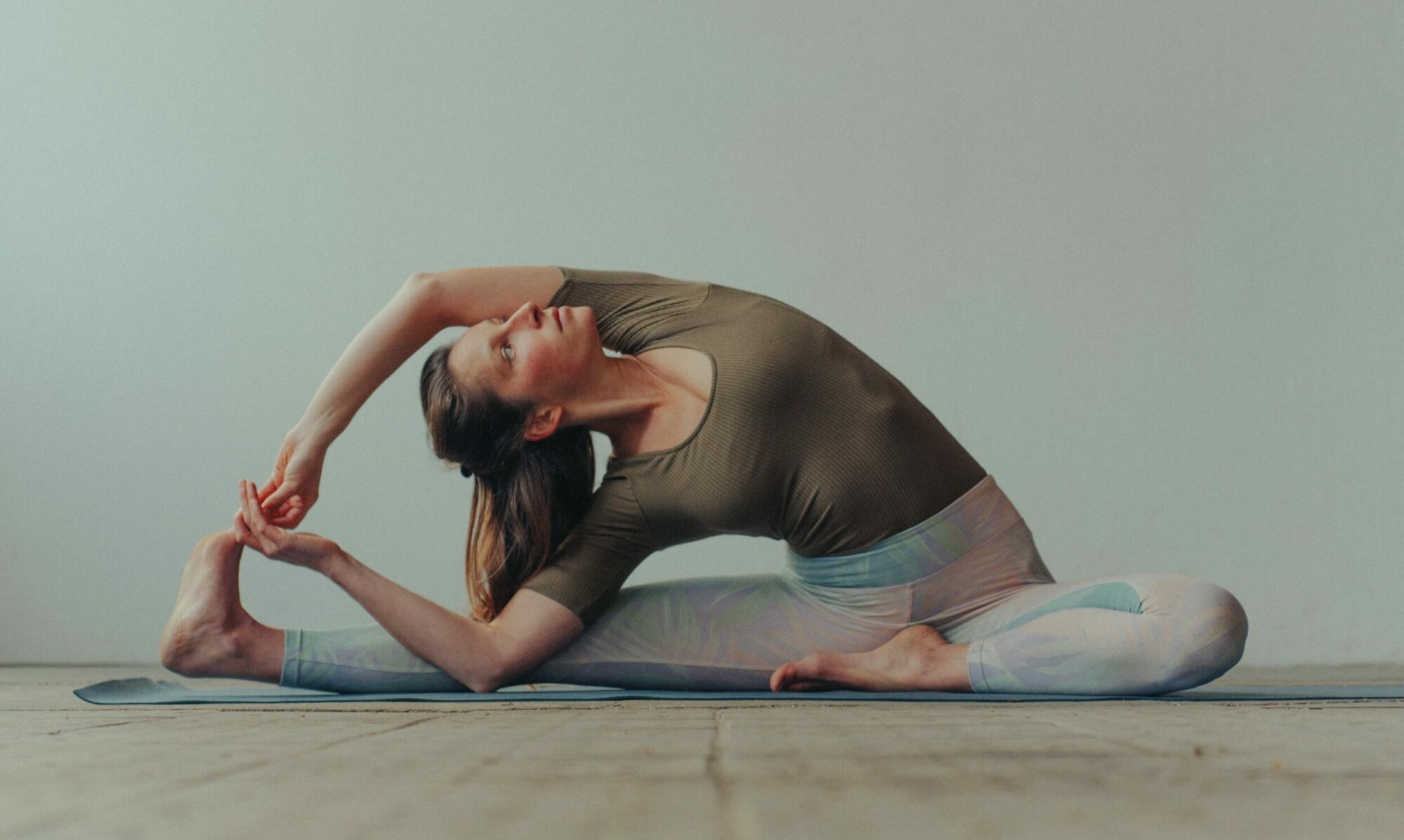
Playful trial and error, regular repetition, iron discipline and perseverance or even a cautious approach are common ways of learning a movement.
The term “form of motion”, however, is mainly used in mechanics. There, it is used to describe, (…) in addition to the forces in a system, the movements of bodies, as the movements usually also have to do with forces.”1
In yoga as well as in other types of movement, we are dealing on the one hand with movements of bodies, but on the other hand also with hidden forces that enable the body to perform a movement in the first place.
Exploring these connections in detail and developing an understanding of them would be another way of dealing with forms of movement, which is explained in more detail below.
Recognize a form of movement
Before a movement can be implemented personally, it can first be studied. This means looking very closely at the person performing the movement or taking a photo in which the movement is clearly visible. However, the picture is not only looked at in amazement, but the observation can be expanded with concrete content by looking at the exercise according to certain criteria.
The special feature of this type of observation is that this initial questioning observation creates a so-called “object reference” to the exercise. You, as the subject, face the exercise, the object, inquiringly and maintain this concentration for a few minutes.
The following criteria in the form of questions can accompany the concentration, for example:
- Where is the center of the movement?
- Where does the movement start and where does it go?
- Where is the tension, where is the relaxation?
- What is the quality of the movement?
- Is the movement powerful or gentle, flowing or striving?
- What is the expression of the position?
- Does the exercise seem easy or strenuous, contemplative or awake?
- What forms do they take? What effect do these forms have? Are they clearly structured or soft in expression?
This first step of contemplation promotes activity in the consciousness through the concrete references, as the exercise is not evaluated from the usual sympathy or even antipathy, but ideally is viewed in a completely new light, as free as possible from previous experiences and associations.
Through the free observation, the mind with its hasty assessments recedes into the background and a consciously created, pleasant calm arises. The calm here is the result of an activity carried out in consciousness, which is very unusual: you keep the object, the movement, in your attention for a longer period of time and do not overload it with subjective evaluations but study it according to the proposed criteria.
Introduce a form of movement
Once the image of the exercise has been sufficiently explored and the connections between the movements become more tangible, the exercise is built up in the imagination in the next step. Here, however, the object under consideration is not simply remembered, but a vivid image is to be created in the consciousness until it stands clearly and concretely before you. This requires and trains a lively and active imagination. It is important to think of the image as faithfully as possible in order to preserve the reference to the object.
The imaginative activity, which can also be seen as a creative process because the image is recreated to a certain extent, usually also gives rise to certain feelings about the exercise. This does not mean indulgent feelings, but rather a feeling for the form of movement itself, for the connections, for the expression of the position. This is also associated with an increasing inner agitation that motivates you to experience the movement form with your own body.
Creating a form of movement
The next step is the practical implementation of the movement form. In doing so, it makes sense to first concentrate on one aspect of the execution that has already been undertaken and to bring this to a visible expression with the body. The aim here is not to directly copy the position as perfectly as possible, but rather to carefully implement the previously studied movement form. The movement can really be created here, the individual elements and forms can be worked out step by step as in a work of art. In order to avoid falling into old patterns of movement, it is important to always orientate oneself consciously to the image previously created in the imagination. This trains concentration and imagination in the mind and at the same time provides orientation in the execution. The clearer the image of the exercise in your mind, the easier it is to put into practice.
This movement approach developed by Heinz Grill, which is implemented in the “New Yoga Will” exercise method, can be applied flexibly to all types of movement. The decisive factor here is that a position, a posture, a movement is not imitated out of habit, but that the consciousness is trained in its creative activity through the formation of the imagination for the exercise and, in connection with this, progress and further development of previous abilities is possible.
Engaging with a form of movement, recognizing it, imagining it and ultimately creating it anew promotes creative activity and enables the development of new, previously unknown skills and opens up new individual possibilities.
The movement forms of the sun salutation surya namaskara are shown very clearly here:
https://heinz-grill.de/surya-namaskara/
by Julija
1 lernort-mint.de
